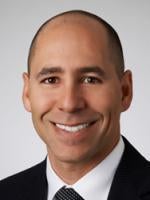On July 20, 2020, the Department of Labor (DOL) released three updated, new and separate questions and answers on COVID-19 with respect to the laws it enforces – the Family and Medical Leave Act (FMLA), the Fair Labor Standards Act(FLSA), and the Families First Coronavirus Response Act (FFCRA), as well as a revised poster and an easy-to-read, quick reference fact sheet for employers on the FFCRA. The DOL answered questions about telework and compensability of hours under the FLSA, and explained that nonexempt work performed during the pandemic will not impact the exempt status of a position, among other matters. Some of the more notable updates are summarized below.
Family and Medical Leave Act (Q&As):
Question 8 specifically addressed employers who change their paid leave policies during the pandemic as a means to reduce costs. The DOL noted that neither the FMLA nor any other law it is responsible for enforcing prohibits an employer from making these changes to its paid leave policies, so long as the changes do not have a disparate impact on employees based on race, gender, age or other protected characteristic. Of course, employers should remember that state laws, e.g., California’s, may impact their ability to change paid leave policies.
In Question 12, the DOL said that during the COVID-19 pandemic, visits to doctors via telemedicine are considered in-person visits, and electronic signatures are sufficient for purposes of establishing eligibility under the Family and Medical Leave Act. However, to be considered an in-person visit, the telemedicine visit must include an examination, evaluation, or treatment by a health care provider; be performed by video conference; and be permitted and accepted by state licensing authorities.
In Question 13, the DOL confirmed that the FMLA does not prohibit an employer from requiring a negative COVID-19 test before allowing an employee who was out on leave unrelated to COVID-19 to return to work so long as this is a uniform requirement for all employees returning to the work place. This is because it is not the employee’s leave itself that forms the reason for a negative test; rather, all employees are subject to the same requirement, and therefore, the negative test is not prohibited nor considered retaliatory conduct.
Fair Labor Standards Act (Q&As):
In Question 14, the DOL answered that all hours teleworked are considered compensable work time for which hourly employees must be compensated. The DOL reminded employers that this includes even those hours worked remotely that the employer did not authorize. However, employers are not required to pay workers for hours worked if they have no reason to know about them – meaning they are not reported and there is no evidence that they were worked. The DOL cautioned employers to provide employees a reasonable means to report all hours worked to ensure that they are capturing hours. Given the importance of accurately reporting hours worked, especially for employees who traditionally have not been permitted to work remotely, employers should also consider training employees on this issue and provide a means for employees to confirm their time records before submission to payroll.
In Question 15, the DOL informed employers that it was applying a “relaxed” continuous workday standard. Normally, alltime between the first work activity of the day and the last activity of the day is considered compensable work hours under the continuous workday standard (other than bona fide lunch breaks). However, under the current telework environment, the DOL wants to encourage employers to be more flexible as employees are often required to take longer breaks to address child care, homeschooling, and similar needs. As such, the DOL said it is acceptable for employers and employees to agree to alternate schedules (e.g., 7–9 a.m., 11:30–3 p.m., and 7–9 p.m. on weekdays) to allow breaks during the day to attend to home needs, provided the employee is paid for all hours actually worked. Moreover, in Question 18, the DOL tells employees that they will not lose their exempt status if they take leave under the Families First Coronavirus Response Act.
In Question 16, the DOL reminds employers that the wage and hour regulations allow exempt employees to perform nonexempt duties that are required by an emergency without losing their exemptions. An emergency is defined as one that “‘threaten[s] the safety of employees, a cessation of operations or serious damage to the employer’s property,’ and which are beyond the employer’s control and could not reasonably be anticipated.” The DOL recognized that the pandemic is such an event, and will not disallow an exemption based on an exempt employee performing nonexempt functions, provided the employee continues to be paid on a salaried basis of at least $684/week. At the same time, in Question 19, the DOL reminded employees that employers can reduce weekly salaries without losing exempt status due to the economic downturn, provided the weekly salary remains at least $684/week, and the reduction is not based on the quality or quantity of the work performed.
Finally, in Question 17, the DOL reminds employers and employees that there is no obligation to provide additional compensation under the FLSA to pay employees as “hazard pay,” even if the employees’ work places them in danger due to COVID-19. However, the DOL cautions employers that any “hazard” pay enhancement that is provided must be included in the employee’s regular rate of pay when calculating overtime owed.
Families First Coronavirus Response Act (Q&As):
In Question 94, the DOL noted that employers have some flexibility in returning an employee to work who has been self-quarantined under FFCRA if they have concerns over the spread of COVID-19; notwithstanding the obligation to return the employee to the same or equivalent position with the same or equivalent pay and benefits. Specifically, an employer could temporarily reinstate the employee to a position that requires less interaction with coworkers or require that the employee telework. Further, the DOL notes that employers can also require a negative COVID-19 test before allowing an employee to return to work.
In Questions 95 and 96, the DOL states that employees are only entitled to a maximum of two weeks (80 hours) of 100% paid sick leave under FFCRA, even if the employee was furloughed for a period of time, after having used such leave and then returning to work after the furlough. Returning to work does not “restart” a new two-week opportunity; the total amount of paid sick leave under the FFCRA is limited to two weeks. But an employee returning from furlough would still have whatever leave they had not yet used – whether paid sick leave (up to two weeks) or paid extended family leave to care for the employee’s child because of school closure/unavailability of child care (up to 10 weeks) under the FFCRA. Employers should remember that employees can chose to use other available, accrued paid time off even if they have exhausted FFCRA leave.
In Question 97, the DOL reminded employers that they cannot refuse to return an employee to work after a furlough on the grounds that the employee may need leave under the FFCRA after his or her return. Such a refusal would be retaliatory.
These Q&As are likely not the final instance in which the DOL will update its guidance in these areas, as employers are constantly challenged with new and developing issues in this new world order involving the novel coronavirus.






 />i
/>i


